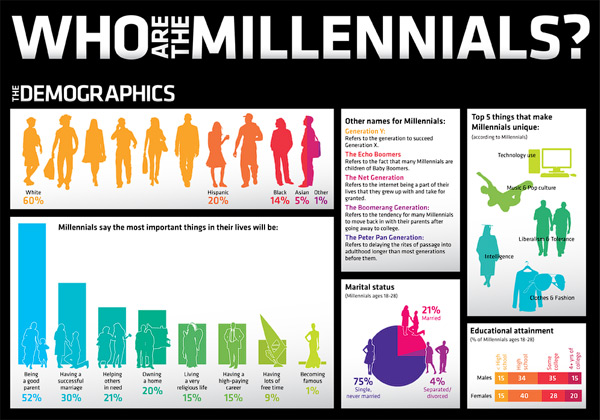It’s the March of the Millennials.
And they’re marching into cities.
National research shows – and countless news media articles have heralded – that young professionals are returning to cities.
Contrary to the conventional wisdom that it was different here, Memphis is in fact the hometown of choice for 25-34 year-old college-educated men and women in our region.
Memphis: Location of Choice
We questioned where YPs were living in our region when the recent PeopleFirst poll showed that a higher percentage of Memphis young professionals were married with school-age children when compared to their peer group nationally. In addition, the same poll showed that they also said that the lack of quality schools was one of the top three factors that prevents them from recommending Memphis to friends and colleague or might lead them to move.
As a result, we would not have been surprised if there are more 25-34 year-old college-educated people living outside Memphis than inside Memphis.
But, that was not the case – 57% of the 48,111 people who make up this key demographic group live in Memphis.
It’s Big Shelby That Matters
When young professionals living in Memphis and outside the city in Shelby County are added together, it means that 80% percent of the MSA’s young professionals live inside the borders of Shelby County.
Memphis is far and away the preferred location: 27,424 live inside the city limits. That compares to 11,088 who live outside of Memphis in Shelby County (Collierville has 2,652, Germantown has 2,180, and Bartlett has 2,287).
Also, belying the notion that more and more of these workers who drive a region’s competitiveness were being drawn by the siren’s call of allegedly lower taxes in DeSoto County, only 5,159 young professionals can be found there.
This is not to say that the Memphis MSA doesn’t continue to be on the losing end of the battle for young professionals, but it is to say that all of the highly visible grassroots and tactical urbanism activities led by young professionals of all races to improve neighborhoods and quality of life are not merely events that make us smile. They are in fact sending the message that Memphis is a place where young professionals are driving change and where they are making – and can make – a difference.
Telling the Right Story
Too often, our civic response to attracting and retaining this group is to say that we need to do a better job of marketing to them. In truth, it’s not that we need to tell our story better; more to the point, we need a better story to tell. If there is one unshakeable fact in research into millennials, it is that they are highly suspicious of institutional, top-down messages and that why campaigns to market to them so often fall flat.
The people who have the most influence over young professionals’ opinions and their behaviors aren’t economic development organizations or well-funded marketing efforts. The people with the most influence over millennials are other millennials. That’s why images of millennials making waves, asking impertinent questions, and suggesting and showing there are different ways to do things have such impact. It’s also why we have to amplify them and enable more.
We aren’t trying to be Pollyannish about the challenge before us. It is significant. But perhaps, for the first time, we can see that Memphis is actually an asset in our messaging about young professionals between young professionals.
Finding Progress to Match the Talk
Few issues have been discussed as much as talent with such discouraging results with perhaps the exception of poverty. Despite all the talk and all the good intentions, we continue to fall behind in attracting and retaining 25-34 year-old college-educated workers.
As we wrote a year ago, among the 51 largest U.S. metros, as CEOs for Cities’ City Vitals pointed out, we lost ground from 2006 to 2012 when the Memphis MSA fell from #37 (26.3%) to #49 (25.1%) in the percentage of the population older than 25 with college degrees; from #47 to #51 in the percentage of creative professionals, and from #36 to #46 in the percentage of the population who are 25-34 year-olds with college degrees – from 3.8% to 3.6%.
Hopefully, the PeopleFirst poll provides the facts that have long been missing in the discussions here about what YPs like or don’t like about Memphis and Shelby County.
Poll Summary
According to a Commercial Appeal commentary by John Daniel, executive vice president of human resources for First Horizon National Corporation and First Tennessee Bank, the results of the poll showed:
— “Nearly six in 10 young professionals gave a grade of “excellent” or “good” to overall quality of life in Memphis and Shelby County.
— “Almost one in five said they would be ‘very likely’ to recommend to their friends that they live here, and those with graduate degrees are twice as likely. Another 32 percent are ‘somewhat likely’ and it is these who could be moved into the very likely category if the right strategies are in place.
— “Young professionals see the community’s major strengths as 1) family and friends, 2) Downtown entertainment district, 3) overall cost of living, and 4) access to green spaces.
— “Major weaknesses are 1) quality of K-12 schools, 2) access to safe/low-crime neighborhoods, and 3) availability of good-paying jobs.
— “The major weaknesses are also obstacles to recommending Memphis to friends and colleagues. Conversely, the best ways to keep young professionals from leaving and to encourage their friends to move here are increasing the number of good-paying jobs, increasing access to safe neighborhoods and improving K-12 schools.”
Good Salaries that Buy More
Other results that interested us were that young professionals were more optimistic about the future of Memphis and more positive in their opinions. It seems that the Memphis public gets more pessimistic as they grow older, but that said, 48.3% of 25-34 year-old college-educated men and women said that they are “not too likely” or “not likely” to recommend Memphis and Shelby County to friends and colleagues and 31% expect to move away in the next five years (which indicates one reason that the #1 source of new residents in Nashville are people from Memphis).
Overall, the young professionals in Memphis seem homebodies – 62% have lived here more than 20 years or for all their lives. A surprising result of the poll was that 62.4% of the 25-34 year-old young professionals earn more than $50,000 a year and 27.8% earn more than $100,000.
We wrote several years ago about a focus group at St. Jude Children’s Research Hospital in which one fellow said he chose to work in Memphis because “here, I could quit living like a student.” His point was that if he took a job in Boston, he would live in a second floor apartment with two roommates and with his bike on the fire escape. Instead, here, he said he could buy a house.
It led us to blog that “Quit living like a student” would be a good bumper sticker for us, but after the city’s low-cost of living was cited as a top reason why young professionals like Memphis, perhaps, the bumper sticker should be “Come to Memphis and give yourself a raise.”
More for Your Money
That’s because if someone earns $50,000 here, because of the low cost of living, that person’s buying power is $58,500.
Here’s what $50,000 gets you in some other cities:
* Houston – $50,400
* Atlanta – $53,500
* Nashville – $57,000
* Charlotte – $50,200
* Louisville – $55,000
* Raleigh – $53,500
* Dallas – $52,000
* Chicago – $43,500
* Austin – $53,500
* Manhattan – $23,000
So, if you’re a young professional, tell your friends to join you in Memphis and give themselves a raise.




I think beyond improving our public schools, there is the need to market to YP that we currently do have some decent public schools within in the city that are located in some nice neighborhoods. Our family relocated here from the Bay area seven years ago and have been very pleased with our sons’ public school-Snowden ( K-8th grade) as well as the surrounding Vollintine Evergreen neighborhood (VECA) that we live in. We can walk our kids to the school and stop and get a coffee at Cafe Eclectic on our way home. Housing is quite affordable and the area is very walkable. YPs are welcome in VECA!